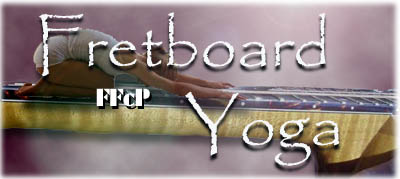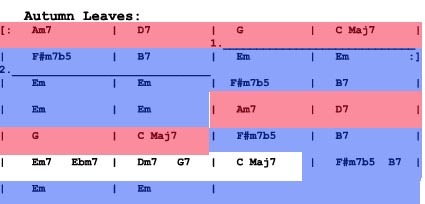« May 2009 |
Main
| July 2009 »
 June 25, 2009 | Math, eggs, and mandolins; higher level understanding
June 25, 2009 | Math, eggs, and mandolins; higher level understanding
Eleven year-old Coco was survivng her Advanced Math class. Her instructor suggested in Parent/Teacher conferences that the pre-Algebra learning would come much easier if she were more flluent with her multiplication tables. In other words, the rote drilling of practicing and polishing single digit "times," 6 x 6, 7 x 9, 8 x 3, etc. was an activity that would bode well in developing a more intuitive sense of numbers that would become essential to higher level math.
Think about using numbers in real life. When a cook is serving omelets to 30 people, does he/she calculate exactly how many eggs he/she will need in planning the meal, or is there an intuitive sense based on culinary experience? Is it a matter of how many individual eggs, or cartons of eggs? You buy them in cartons after all (stores generally don't sell individually) so thinking in dozens is actually a life skill; more likely to purchase four cartons of twelve eggs. Does one think the individual quantity of 48 as a function of 4 x 12, or does intuition kick in?
As youngsters, we practiced the times tables to understand the process of multiplication, but at some point we got beyond the process, and the results themselves became intuitive. We look at the number 64 as an intuitive product of the action of 8 x 8, without actually mentally calculating. At some point, we go from the primitive computation to instinct.
This is what drilling scale patterns and arpeggios is all about. In the beginning, we are looking at the components and make-up of an A scale, the C# in there, the G# that leads to the A, the E which is the 5th of the key, but eventually it becomes an intuitive entity unto itself. You come to an A chord in the song and you aren't thinking these elements, you're just thinking "World of A."

If you are new to the whole FFcP approach to learning the fretboard, be content that the early stages of understanding will start at this primitive level. You are developing a tactile memory, which over time will become something to build your intuition on. The cerebral part, the music theory might be overwhelming now, but over time it becomes subliminal recognition. The cognitive world of "hunch," "premonition," or even "feeling."
For now, just let your fingers enjoy the exercise.
Further:
Dr. Mao: Four Exercises to Sharpen Your Brain
Fingers, Ears, Brain
FFcP Studies
On Perfection
Osmosis and Effective Practicing
Posted by Ted at 8:09 AM
 June 18, 2009 | They say the best things in life are free. Mandolin Resources at the Mandolin Cafe
June 18, 2009 | They say the best things in life are free. Mandolin Resources at the Mandolin Cafe
Sometimes it's right there in front of your face, as close as your computer terminal. We look for inspiration and knowledge from method books and teachers, but there are plenty of good resources out there within the click of a mouse. We hope you consider the treasures here at JazzMando are some of them, but we'd like to highlight a particular library of learning that can keep you studying for a long time, practical knowledge in some fairly bite-sized chunks.
Understand we're not saying you shouldn't spend money on published materials or attend a good workshop; there's nothing like having a well-organized curriculum of study strategy on the shelf or an inspirational teaching veteran to set you properly on course. We think you can supplement these experiences with your own online exploration, and we are definitely in the "Golden Age" of self-enhancing materials.
Our friend Scott Tichenor at the Mandolin Cafe has compiled a couple decades of his own studies, along with some other contemporary big names to give you hours, if not months of incredible material. Practical, concise, and real-life applicable, you can pick up tricks from Pete Martin on Texas style chord progressions, theory tips from Professor John McGann, cross-picking studies from Mickey Cochran, and a slew of other very practical information by some of today's best teachers.
These lessons are guaranteed to change your life.
Or we'll double your money back...
Guide to Mandolin Triads by John McGann
Texas Style fiddle tune chord progressions by Pete Martin
Four-Finger Closed Position by Ted Eschliman
Various Meters & Time Signatures by Niles Hokkanen
Modes made easy by Niles Hokkanen
Pat's chord shapes by Pat McClintock
Octave Mandolin by John McGann
Swing Mandolin I by Seth Rosen
Swing Mandolin II by Seth Rosen
Swing Mandolin III by Seth Rosen
Crosspicking Series - Introduction by Mickey Cochran
Crosspicking Series - Lesson 1 by Mickey Cochran
Crosspicking Series - Lesson 2 by Mickey Cochran
Crosspicking Series - Lesson 3 by Mickey Cochran
Crosspicking Series - Lesson 4 by Mickey Cochran
Jazz chords
Two-finger chords
Building Speed
10 Licks in B
Perpetual motion
Rhythm changes I
Rhythm changes II
Rhythm changes chords
Tuning
Bluegrass lesson
Up the neck
Improvisation
Texas swing
Pick direction
Swing guitar
Explore: Mandolin Cafe Lessons
Also, get the Mandolin Cafe News feed

RSS: http://www.mandolincafe.com/archives/rss.html
Posted by Ted at 8:13 AM
 June 11, 2009 | Let's review. Why Closed Fingerings again?
June 11, 2009 | Let's review. Why Closed Fingerings again?
For the folk/bluegrass musician, the notion of closing up fingerings and forsaking the open strings seems very much counterintuitive. The majority of the repertoire is based on open string keys, songs played within the relative comfort and safety of of G, D, or A. In those keys, you not only have the root of the key in an open string, you have that important 5th (D, A, E) to ring out in the Tonic chord and Dominant. You can strum and ring all you want, sometimes with a forgivable dispensation of missed strings. So why worry about closing things up and torturing the pinky with that 7th fret stretch? Let's look at four reasons:
Horn Keys. The church hymnal strikes fear in the heart of many a novice mandolinist. Keys of F, Bb, Db are not uncommon as the literature is written for voice register. Same thing with Broadway tunes and you have an entire body of jazz written for the sax and trumpet. Understand if an Eb alto sax is trying to play in the key of A with the rest of the band, he/she has to think in F#, which explains why so much "horn" music is in the keys of Eb (C on the a/sax) and Bb. Friendly to the mandolin? Definitely not if you're expecting to use much in the way of open strings, especially on those critical notes of tonic and dominant.
Transposability. So you learn the FFcP, study and master all kinds of patterns that are now movable. So what do you gain? THE WORLD! You can move intuitively across strings and frets, and now you're not thinking note names, you're thinking scale degrees and patterns. Some might argue you aren't "thinking" at all any more--just "doing." In other words, you improvise through an intuition based on sound and feel. You "sing" the music through your fingers. We've enjoyed the feedback of many who have achieved this sate of FFcP Zen. "The notes are just coming to my fingers from nowhere!"
Range extension. This goes along with the transposablity; you now aren't limited to the lower frets of the mandolin but are free to securely wander in the upper altitudes of the fretboard. Once you adapt to the closer spacing of the 9th through 15th frets, you are practically handed a new instrument. This is a cool way to get around.
Tonal variety. Yes, the resonant zing from an open string is natural sonic beauty. There is also an articulation consistency when a succession of notes is completely closed in fingers. Play the open D on your mandolin and follow up with a 7th fret (G string) D; you'll hear a tonal difference. One isn't necessarily better or worse, just more consistent with the other notes you're playing in a sequence. Also, if you're really in control, you can get a subtle vibrato on a long sustained note. This is why orchestral musicians actually prefer closed over open fingerings.
We recently took a step back and submitted in our June MandolinSessions column, a review on what FFcP is all about. If you are new to this, or simply want to understand the overview mechanics of the Four Finger Closed Position, take the time to read this. Also, if you wouldn't mind, job security is a good thing; submit your comments (positive, hopefully) in the Feedback section on the bottom of that article. (Love the 5-star ratings, too.)
Read Jazz Mandology "Closed Fingerings"
Further:
The Importance of Pinky
Doublestops and Barre Chords
The Ab Position
Fear of Flying
Leading Off Third Base; The benefits of third position fingering

Join the FFcP 'Fretboard Yoga' Facebook Group
Posted by Ted at 11:13 AM
 June 4, 2009 | Start your day out with a song
June 4, 2009 | Start your day out with a song
We all have different motivations for playing. A couple weeks ago we explored Malcolm Gladwell's 10,000 hours principle of mastery from his recent bestseller "Outliers." Not everyone is cut out to me a mandolin immortal, let alone, few of us have the time to even try. Nonetheless, we have to maximize what learning time we do have, and try to find the balance between learning acceleration and enjoyment. We want to talk about a quick way of doing both, "starting out with a song!"
We've always advocated including 8-15 minutes of warm-up time in your daily practice regimen. The purpose here is to get the muscles and circulation going, as well as mental synapses for effective playing and efficient learning. Most often, you'd start your session with the exercises, but how about a twist to this? Start with a familiar tune. Let's suggest "Autumn Leaves."
You'd play through the melody of the song once or twice (try it in 3rd position!), maybe run through the chords a few times. If you're up to it, improvise a few choruses. Then, get your brain going and isolate the tonal centers. The big ones in this song will be E minor and G Major:

Note in the above diagram, we've tinted what we feel to be G Major in red, E minor in blue. (Don't worry about the rest of the song, that's for another discussion). Next on your activities, go to some FFcP exercises in the key of G. Play them through in the 1st position (4th FFcP on D string 5th fret). Get the feeling of where everything is, especially the 'I vi7 ii7 V7' arpeggios; note the chord similarities within the song. There's a reason for those measures!
Move up the fingerboard with a 2nd FFcP basing your 2nd finger on the D string 5th fret. Same thinking as you play the exercise, how will you use these patterns in your improvising of the song? Experiment with other higher position variations; move between them if you can.
You can than tackle the E minor the same way, starting with the Dorian/Minor FFcP, 1st FFcP D string 2nd fret. Again, check out the 'Em G F#m7-5 B7' progression within the exercise and try to wire your brain for where these lie. Move them up the fingerboard, too.
After you've worked these, go back and do some more improvising on "Autumn Leaves". You should notice more ideas coming to you, sort of in an "auto-pilot" sense. This is great because it allows your brain the higher function processes of thinking big picture structure of your solos, where you will peak in intensity, where you'll take mental "breaths," how you're going to end. This can get you away from just sitting in front of some chords and "blowing."
Purpose. Meaning. Improvisation with intent.
Occasionally, let it start with a song.
Further:
Are you improving?
Practice Regime; A Balanced Diet
Why Play?
Super FFcP
Advanced FFcP: Over the Fingerboard
Posted by Ted at 12:15 PM

Disclaimer: In the 'Information Age' of the 21st Century,
any fool with a computer, a modem, and an idea can
become a self-professed 'expert." This site does not
come equipped with 'discernment.'
|



